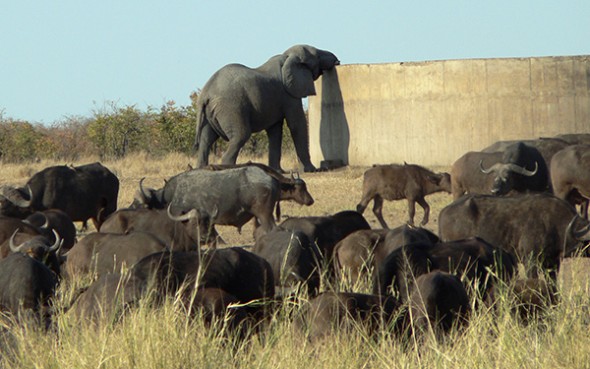
South Africa’s sniffer elephants learn to track explosives
With their long trunks, elephants have a remarkable sense of smell. Now, a South African is training a group of the pachyderms to smell out explosives and narcotics. The US army hopes to understand the biology and turn it into science. You’ve heard of sniffer dogs and rats trained to detect landmines; now get ready […]

With their long trunks, elephants have a remarkable sense of smell. Now, a South African is training a group of the pachyderms to smell out explosives and narcotics. The US army hopes to understand the biology and turn it into science.

You’ve heard of sniffer dogs and rats trained to detect landmines; now get ready for elephants on patrol. A project supported by the United States Army Research Office is testing the smelling abilities of elephants in South Africa so that they can be used to track down explosives, landmines, humans and other animals.
Sean Hensman, operator of Adventures with Elephants, told news agency Channels Television that the plan was to see how well an elephant could follow the scent of a human, rhino or lion into the bush. “An elephant’s nose is amazing,” he said. “Think about mammoths, which had to find food through the ice.”
Underlining the mammoth on the hunt for food analogy, the news agency Vice News reported that elephants could pick up a scent from more than 91.4m away.
Hensman, who trains the elephants at a game farm 180km northwest of Johannesburg, says the elephants will not be taken into battle. “If we suspect there are drugs or explosives [in an area], we will bring [the suspect items] to the elephants.”
The US Army Research Office has been involved with the project for five years. It is studying the biological structures found in elephants’ trunks in the hopes of finding a way to build similar technology that can be used to help soldiers in combat.
The project has a number of roots: elephants in Angola, which suffered during decades of civil war, have been observed avoiding heavily mined areas, suggesting they smelled the explosives and their trunks warned them to stay away.
About his involvement, Hensman explains that his father was watching a herd of elephants in Zimbabwe in the 1990s when he discovered that a female member of the herd had tracked him. Inspired, his father trained 12 elephants for anti-poaching patrols in Zimbabwe.
At the age of seven, Hensman was used to having elephants in his backyard. “Dad had an idea to release them on to his game farm so that we can learn about wild elephants. When they arrived they were [too] small to release so we had to look after them,” he recalls.
“We found that they quickly associated with their keepers. Within two weeks they were following their keepers around and obeying basic commands.”
In 2002, however, the family lost their three farms to President Robert Mugabe’s land seizures. They elected to move to South Africa, where Hensman continues the work with elephants.
One of the challenges of preparing an elephant for the sniffing experiment is gaining its trust. Once both parties understand and trust each other, both parties get rewarded, says Hensman. “To scent, it doesn’t take long. The difficult part is training the elephant to indicate when they smell. The process of training an elephant takes about two months if done full time.”
He has already trained three elephants for this sniffing experiment. The aim is to see if elephants can smell diseases such as foot and mouth or cancer. “In addition, one can find a reason not to destroy problem elephants but they could be trained to assist conservation or humanitarian efforts.”
Watch as an elephant smells buckets and lifts its front foot when it comes across an explosive:
By: Melissa Javan
Source: Media Club South Africa
